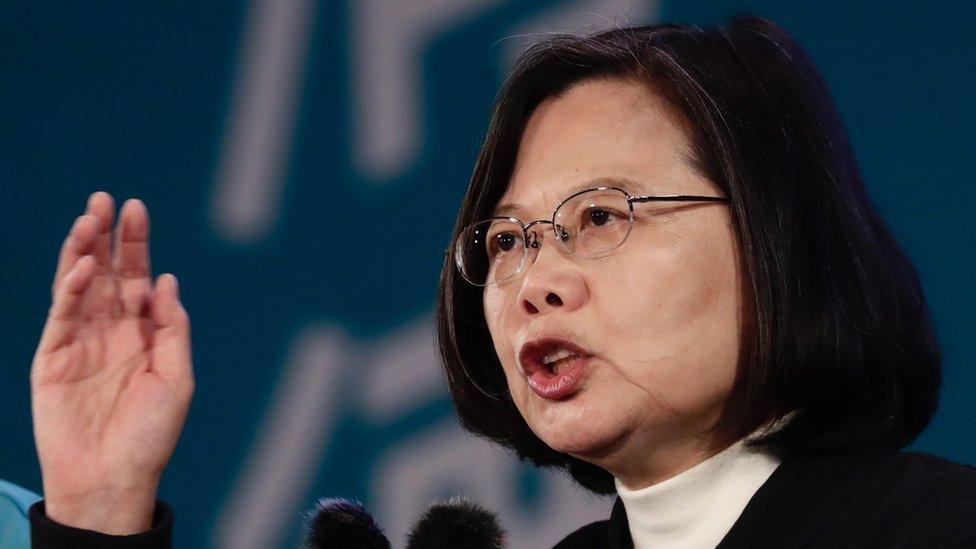The battle over which flag to fly in America's Chinatowns
- Published
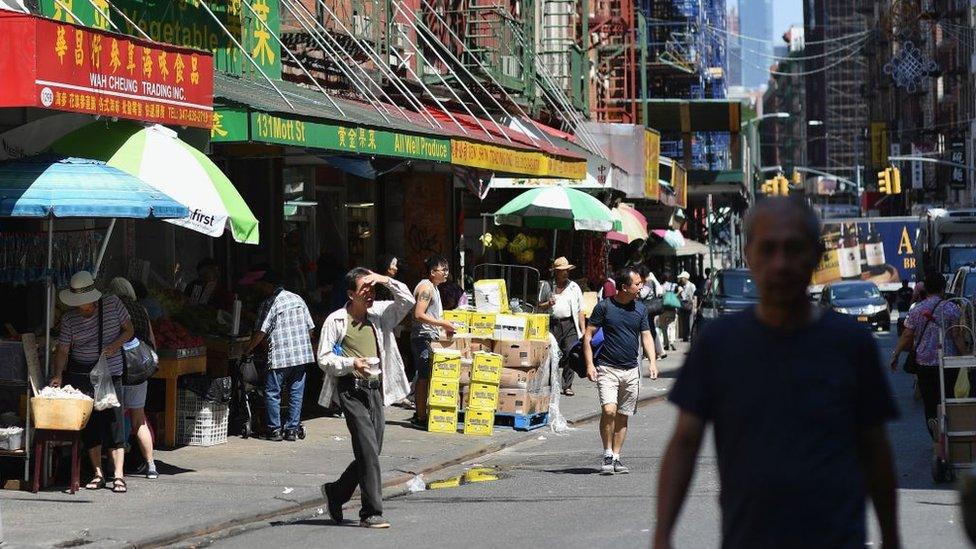
Later this week, thousands will head to Manhattan's historic Chinatown to celebrate Lunar New Year. But amidst all the pomp and the parades, revellers might also find themselves caught up in a healthy dose of politics, writes Zhaoyin Feng of the BBC's Chinese Service.
Almost every day, 76-year-old Fang Yanhua, the president of the Chinese-American group Suyuan Association, follows the same routine, which includes playing mah-jong for hours at the association's office at New York City's Chinatown in Lower Manhattan.
Drastic change is unusual in the historic district. But a seemingly small change, made by Suyuan Association, has sparked a heated and profound debate within the community.
In August 2018, for the first time in nearly a century, the association raised the People's Republic of China's five-starred red flag.
It replaces another Chinese flag commonly known as the Blue Sky, White Sun and a Wholly Red Earth, the national flag of the Republic of China (ROC) , which ceased to be used, except in Taiwan, when the PRC was founded in 1949.
"I am Chinese, so I support China," Mr Fang told the BBC. When he was born in southern China in 1943, the country still flew the ROC flag, which is now history in Fang's view.
"The historical current has changed direction."
Why are there two flags?
The ROC was founded in 1912 and ruled by the Kuomintang party. In 1949, after the Chinese Communist Party defeated the Kuomintang in the civil war, the CCP founded the People's Republic of China (PRC) in Beijing, and the Kuomintang retreated to Taiwan, claiming Taipei as the temporary capital.
The five-starred red flag is PRC's national flag, while the ROC flag is now mainly displayed in Taiwan, which has been effectively independent but regarded by Beijing as a rebel region for more than 70 years.
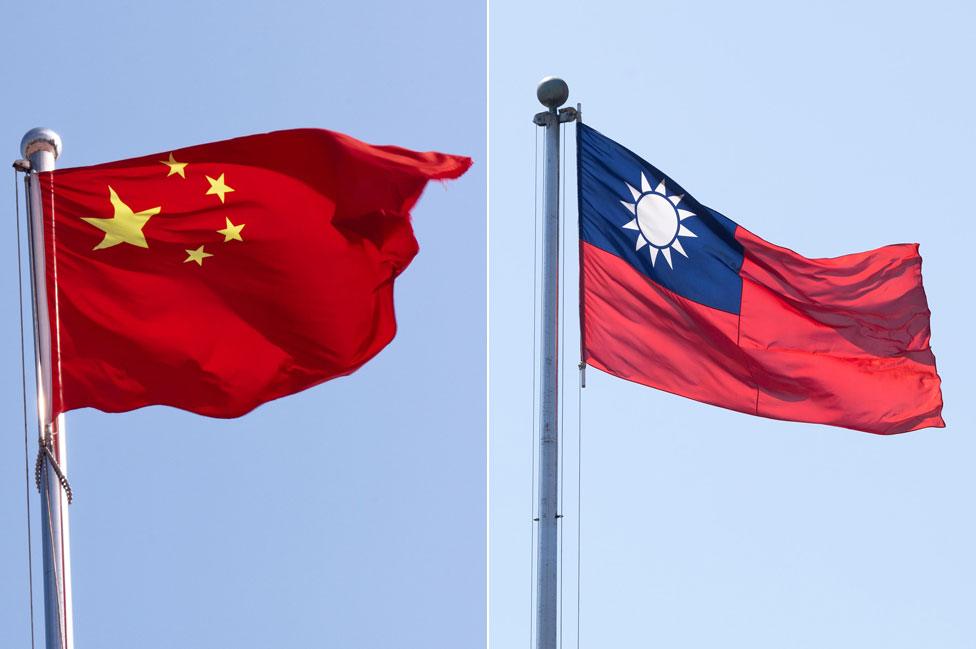
The People's Republic of China flag has largely replaced the Republic of China flag, but not in Chinatowns
In mainland China, the ROC flag is usually only seen in museums and history television series, or as a sign of nostalgia to the "old China". In Taiwan, the PRC flag is largely considered as an unwelcome symbol of Beijing's aggression.
In international events, Taiwan is banned from using the ROC's name, emblems and flags. In 2015, during a Washington DC event to commemorate the end of World War II in Asia, the Chinese Ambassador to the US Cui Tiankai cancelled his attendance at the last minute, due to a wreath displaying the ROC's national emblem.
The two China flags are rarely displayed together, with overseas Chinatowns as one of the few exceptions.
Which flag to fly
Across a narrow alley from the Suyuan Association, the Chinese Consolidated Benevolent Association (CCBA), the oldest and largest Chinese American association founded in 1883, flies its ROC flag proudly.
"I don't agree that changing to the PRC flag is the general trend. They (Suyuan Association) simply pursue a different political vision from ours," Eric Ng, President of CCBA, told the BBC.
The president of the CCBA used to be called "Chinatown Mayor", but Mr Ng may be losing his grip.
Most newly established Chinese-American groups fly the PRC flag, and across the country the PRC flag has become more and more ubiquitous in America's Chinatowns, as several older associations in New York City, Los Angeles and San Francisco changed over.
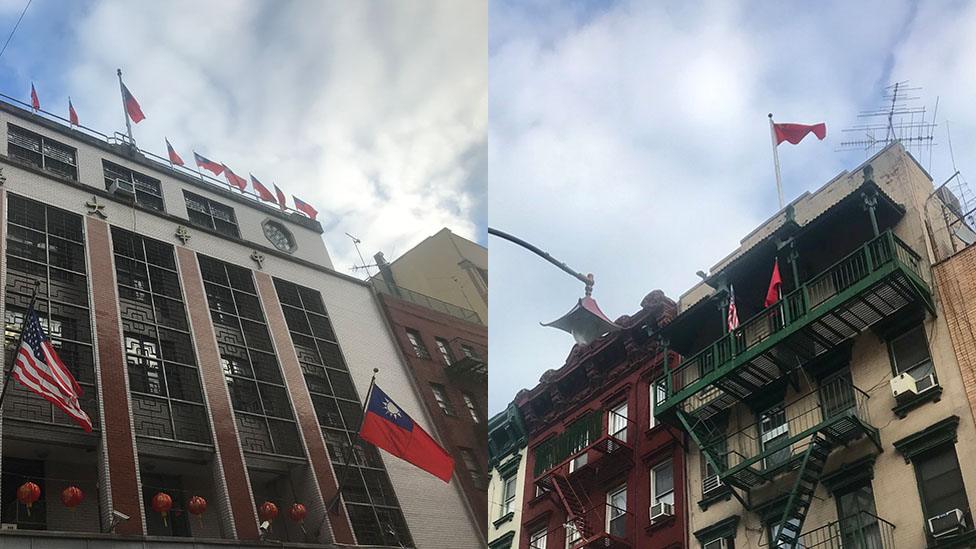
On the left, the ROC flag flies in Manhattan's Chinatown. On the right, across the street, flies the PRC flag
Mr Ng attributed the phenomenon to a large influx of immigrants from mainland China in the recent years, who are politically pro-Beijing and now hold leadership positions in various immigrant associations.
The rise of China plays a role too.
"China is now stronger," Mr Fang says.
His association had considered switching flag years ago, inspired by China's soaring political and economic status in the world.
When the Suyuan Association adopted the new flag, anti-Beijing protestors gathered in the street outside.
Mr Fang, now a US citizen, says he respects the rights to protest and dissent in the US, and acknowledges it's not the case in China.
"In America, one can criticize President Donald Trump, but in China, one can't do the same to President Xi Jinping."
But the flag switch was not at all political, insists 72-year-old Kuang Junlin, co-president of Suyuan Association.
"We just wanted to express our love for the motherland," he told the BBC.
He says the PRC flag represents "mother", while the ROC flag is "grandmother."
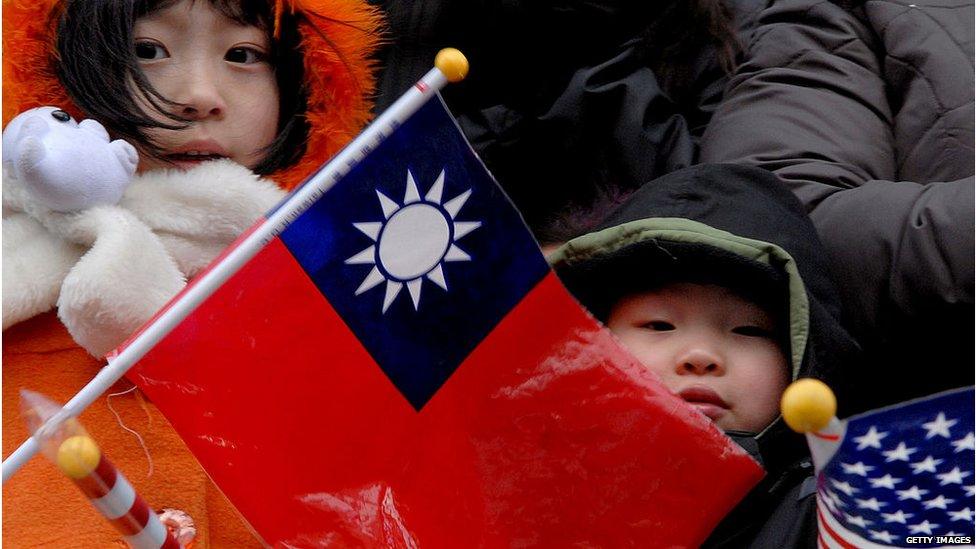
A child holds the ROC flag during a parade in DC's Chinatown.
Rising tension between Taipei and Beijing may be another contributing factor. Taiwan's Presidenjt Tsai Ing-wen has been vocal in her opposition to Beijing's attempts to exert authority over her country.
In an interview with the BBC, she said China needs to "face reality" and show the island "respect".
Beijing is unhappy with her stand, as are some Chinese-Americans.
"We support a unified China and would not accept Taiwan independence," says Junlin Kuang, a former chairman of Suyuan Association.
Meanwhile, Remus Li-Kuo Chen, a senior diplomat of Taipei, told media that the flag switch highlights mainland China's increased efforts of minimizing Taiwan's international space.
Agree to disagree
Almost all Chinese-American associations that switched flags made the decision by casting a direct vote among members.
"We follow the American rule, as we live in America now," Mr Fang says.
He prefers decision-making in the democratic way because "the association belongs to all of us". Only 100 out of the Suyuan Association's 700 members voted on the flag change, but among those who casted a vote, more than 95 percent supported the change.
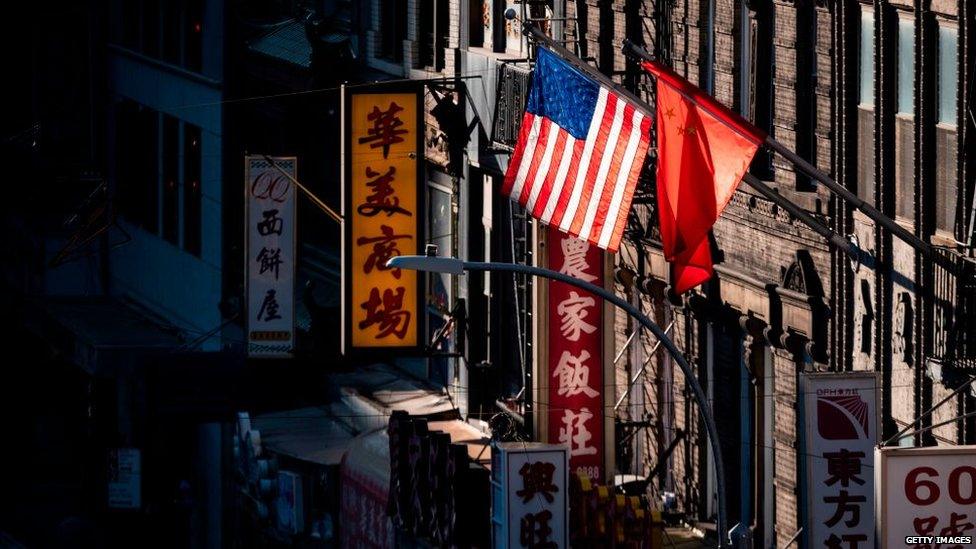
The PRC flag flies next to the US flag in Manhatten's Chinatown
"The two China flags are flying side by side, mirroring the freedom to identify in the US," Nancy Yao Maasbach, President of the Museum of Chinese in America, told the BBC.
The changing of flags is associated with a thoughtful, reflective and potentially painful conversation among Chinese immigrants about their mixed identity, she says.
Though discontent with Suyuan Association's decision, Mr Ng agreed to disagree.
Whenever Ng and Fang occasionally run into each other on the bustling streets in Chinatown, they will still nod at and greet each other in Taishanese, their shared mother tongue.
"I believe in free will," Mr Ng says.
- Published14 January 2020
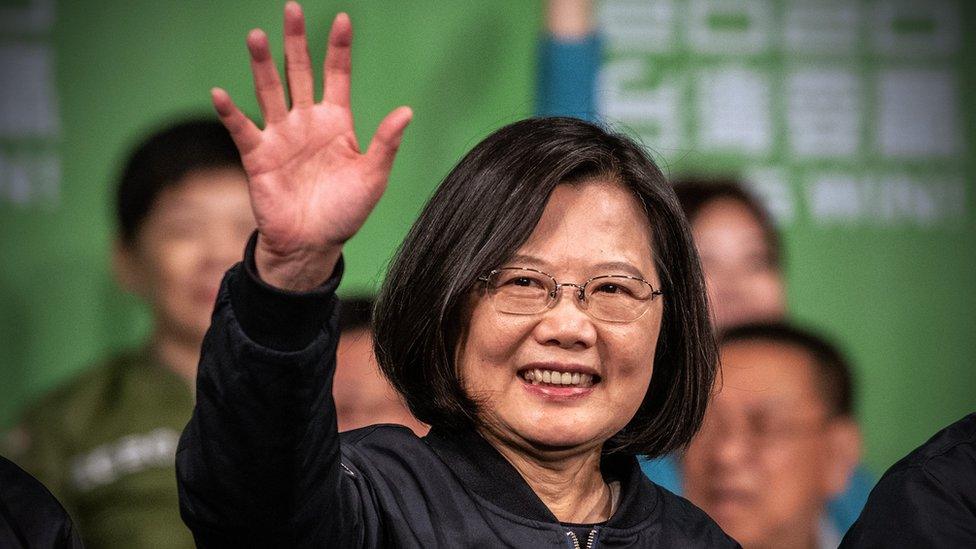
- Published8 January 2024
